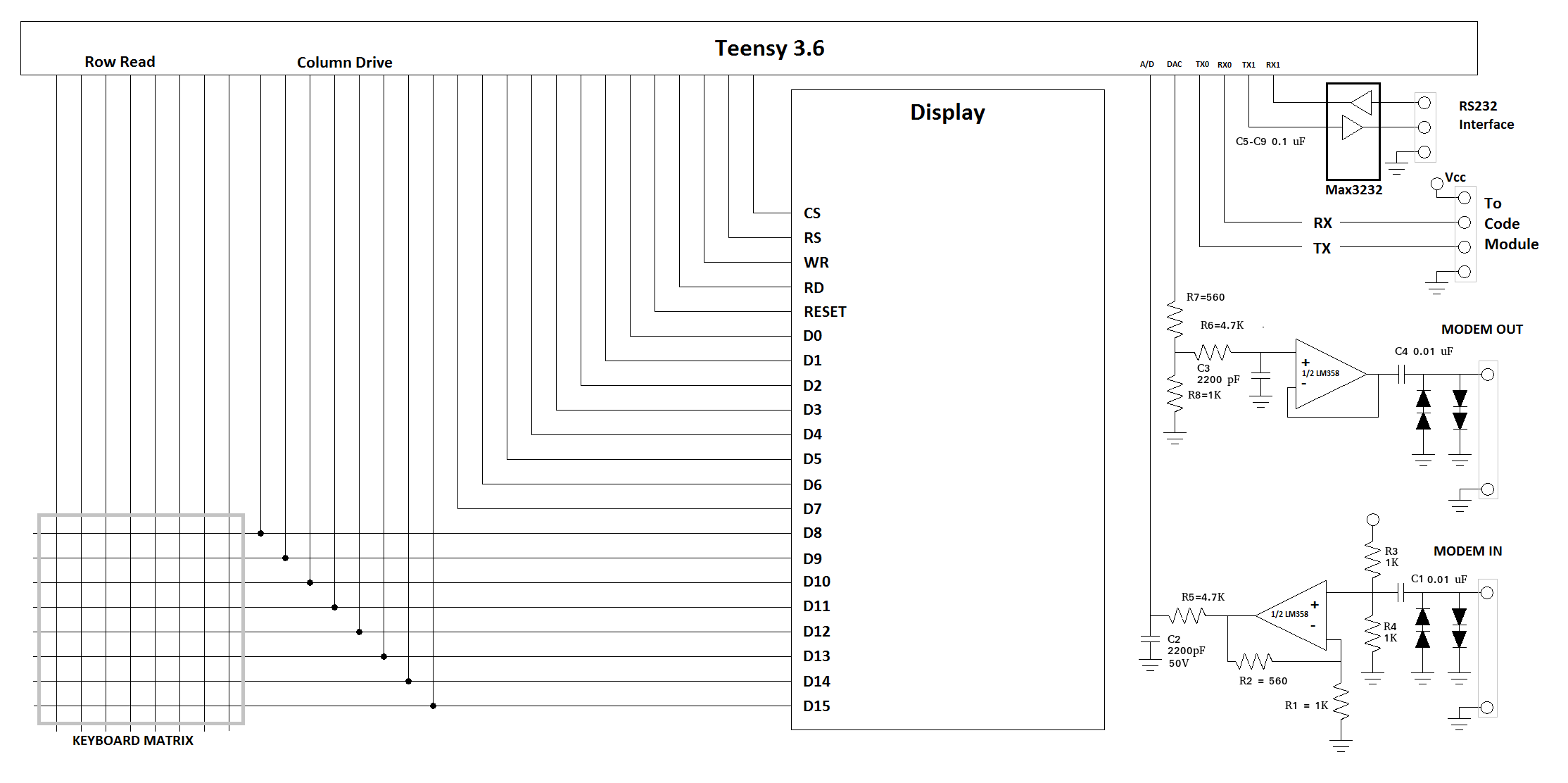With full deference to Maximilian Strauch's Apple II emulator and Jorj Bauer's Apple IIe emulator, here's my first concept for the initial prototype of the terminal board. I've already ordered some of the parts.

I had to re-arrange the pins to get the functionality I wanted. I'm multitasking some of the display data lines with the keyboard scanning to save pins. I've also fleshed out some of the design for the interfaces such as an RS232 interface to talk directly to a PC (through a USB-Serial converter), the modem signals and the interface to the code module. I'm just using logic-level serial to the code module; this should be general enough of an interface to work with all sorts of different module implementations.
The current concept for the code module is to just use a Teensy 3.2 in a 28-pin socket. I currently think that it is a general enough interface that all kinds of different implementations of different processors and technology could be used. Even if a code module is physically larger than that, it could just be a larger mezzanine board with a socket and screw holes to allow robust mounting.
The code module would implement a basic serial command interface allowing keys to be downloaded, packets to be downloaded, encoded and uploaded back to the terminal where encoded data could be output on either the RS232 interface or the modem interface. The reverse would occur to decode messages and then show them on the display.
I have some concern about the keyboard scanning approach, but I'm going to go with this simplest approach for now. I want to get something up and running to validate as many of the other ideas as possible sooner than later. In particular, I think that there is some possibility of signal radiation that would allow a snooper to monitor key inputs, so later I'll probably change the key scanning interface.
For the modem interface, there are several different possible "modes" that might be utilized to transfer data into and out of the PEU and into or out of devices such as phones. Here's a list:
1. 110/300/600 baud modem direct over cellphone audio - I've developed software modems in this
range on systems like the Teensy before. With a 180 MHz Cortex-M4F, there should be plenty
of horsepower for a simple software modem.
2. Capture the audio file on the target device, send audio file, play back audio file.
3. An App that can convert audio into binary (software modem on phone). Send the binary data file. The app then converts the binary file back to audio. Play back over speaker/headphone.
4. Use a USB device which can convert data to/from audio from/to data.
Sent data as file over email/txt.
Anyway, I have more design work to do (e.g. the power supply) as well as parts selection
before full-up prototyping.
 codemonky
codemonky
Discussions
Become a Hackaday.io Member
Create an account to leave a comment. Already have an account? Log In.